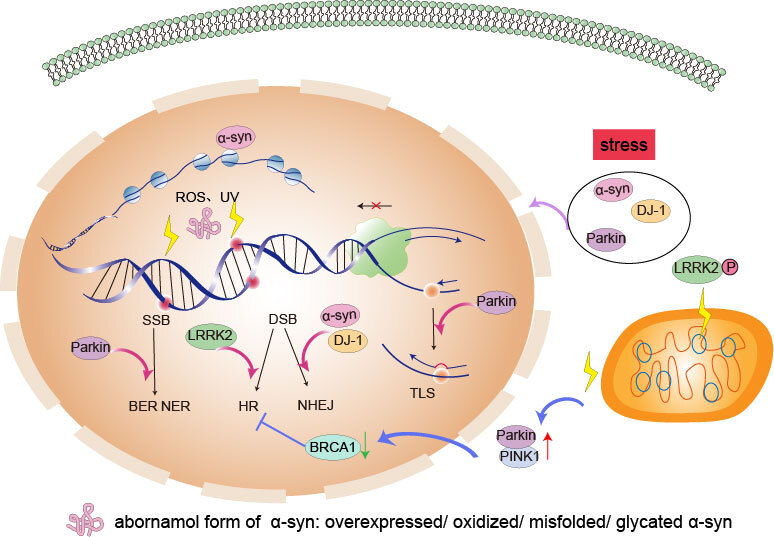Figure 1.

The possible role of common familial Parkinson’s Disease-related mutations in DNA damage repair. α-synuclein (α-syn), Parkinsonism associated protein deglycase (DJ-1), and Parkin can translocate into the nucleus under stress conditions. α-syn can interact directly with histones and DNA. Abnormal forms of α-syn in the nucleus, such as overexpressed, oxidized, and misfolded α-syn can cause DNA damage. a-syn has also been reported to be involved in the repair of DNA double-strand breaks (DSBs) via non-homologous end joining (NHEJ) pathway. Parkin is reported to be involved in DNA excision repair caused by ultraviolet rays (UV) and oxidative stress. In addition, Parkin is found to be involved in translesion DNA synthesis (TLS) that bypasses lesion damage when the progression of the replication fork is blocked. DJ-1 is also assumed to be involved in the NHEJ pathway to repair DNA DSBs by a study. Mutations that cause abnormally increased activity of leucine-rich repeat kinase 2 (LRRK2) kinase can cause damage to mitochondrial DNA. LRRK2 inhibitors hinder the homologous recombination (HR) pathway indicating its potential role in DNA repair. Mitochondrial damage can cause DNA DSBs in the nucleus via the phosphatase and tensin homolog-induced kinase (PINK1)/Parkin/breast cancer susceptibility gene 1 (BRCA1) axis.
